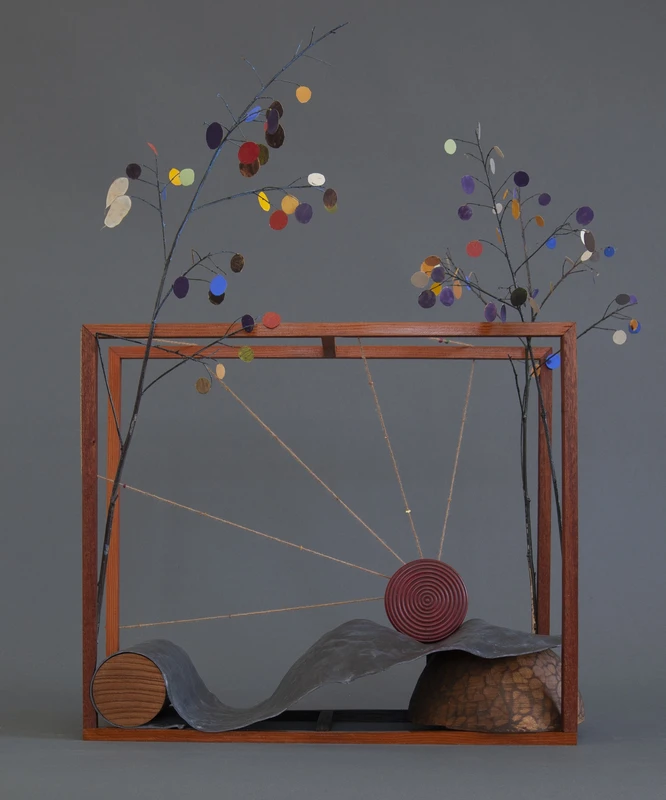Frank Kent: Days
9 Feb-11 Mar 2023


Frank Kent’s sculptures are psychological landscapes, transmuting ideas and experiences into material form.
Kent worked as a carpenter before studying at Nottingham Trent University, graduating with a BA Fine Art in 2010. During his postgraduate studies at London’s Royal Academy Schools, painting and woodwork met halfway. This is also reflected in Kent’s most recent sculptures, in which objects he has collected are brought together and then altered and incorporated into wooden structures crafted with a characteristic lightness of touch.
Kent embraces an economy of materials to find the most direct ways of communicating his ideas. This is the joy of sculpture, he explains, in which parts are built up but also removed, so that they appear in a state of motion or growth. In So far to go (2021), for instance, wooden drawing curves are amassed in a branch-like structure. One curls back and is attached to a Tufnol cog, which obscures the vanishing point of three pieces of dyed wool held at an angle in a tight, triangular formation. Above, other curves reach into mid-air to suggest the sculpture’s outward motion.
This openness allows Kent’s sculptures to blend in with the world around them, aided by the empty spaces contained in their bodies. These often take the form of an approximate square—a shape that recurs in AIR SIGNS (2019–ongoing), Kent’s collaborative photographic series with Brian Griffiths, whom he met at the RA Schools. This body of work was first presented at Karsten Schubert London in 2020, followed by an exhibition at Van Gogh House the following year.
Described as ‘sideways moments of focus and narrative’, the photographs presented at Van Gogh House framed references to Vincent van Gogh’s life and work in playful compositions, while circling back to the artist’s use of the cube as a framing device in the creation of his own paintings. One photograph captured Vincent’s Chair (1984), a reproduction of Van Gogh’s chair by the Minimalist artist Bob Law, loaned to Kent and Griffiths by Karsten Schubert London.
In 2017, Kent created a series of geometric sculptures out of spruce wood painted white, with subtle flicks of wood curling outwards from their rigid bodies. These were accompanied by similar linear configurations, with the same curling forms, rendered as wall drawings in white chalk. Whether three- or two-dimensional, Kent’s works embody a direct reflection of the modes they occupy. But they also always inhabit a further realm: that of the imaginary. Considering the development of his practice, Kent describes these most recent sculptures as more inward-looking, reflecting on growth and the passage of time. The sense of geometry and structure are still present, but here they act as boundaries that guide a fuller expression of the transience of thought and experience, beckoning viewers with forms that appear in continuous motion.
Kent enjoys that his sculptures, having originated in the realm of his mind’s eye, can be documented as photographs and as descriptions—embracing the flatness of projection, and the potentiality of their physical existence in the world. But this process also relies on what viewers assign to the works’ constituent parts. As Kent suggests: ‘These works are not like a piece of music that is loaded with emotion, that makes you feel a certain way; I hope there’s something that you take away yourself, optimism or despair, a deadpan joke or a beautiful landscape.’